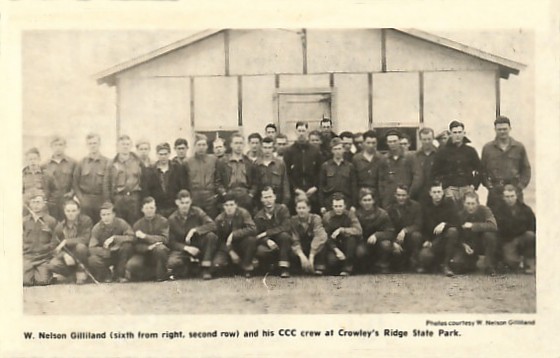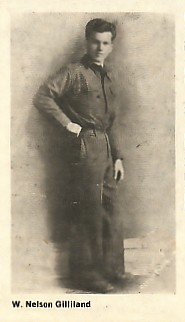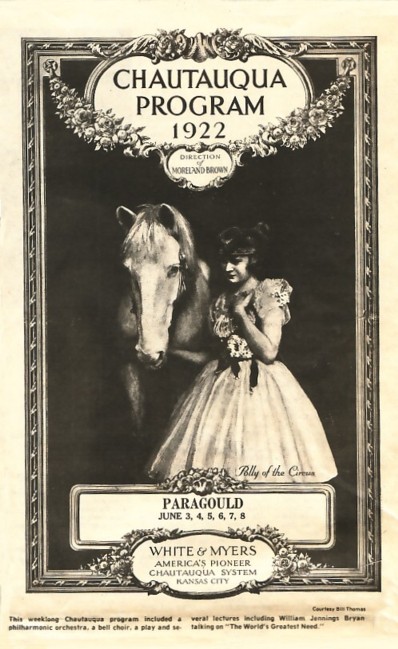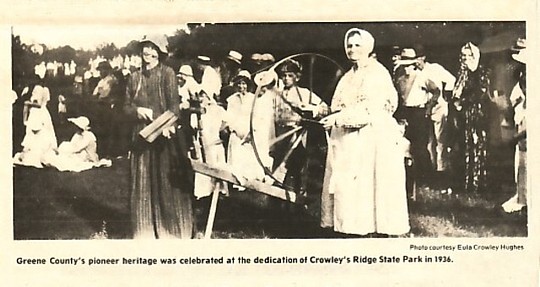
| W. Nelson Gilliland (sixth from right,
second row) and his CCC crew at Crowley's Ridge State Park.
Photo courtesy: W. Nelson Gilliland I remember: Walking from town to the CCC camp in Walcott |
| I arrived in Paragould about
4 in the morning on Nov. 9, 1933. There were 100 of us from
northeast Missouri. We were taken to Walcott to the CCC camp. When we arrived at the camp, there were about 20 men there. They were to be our leaders. They didn't have the mess hall built when we got there. So we ate outside for some time. We used regular Army mess kits to eat in. It was several days before they finished our bunks so we slept on the floor. We worked eight hours a day, five days a week -- unless you got caught doing something that was a no-no. Then you worked seven days with some overtime at night. Pay was $30 a month; you got $5 and they sent $25 home to your folks. We got all of the rocks that are in the buildings and bridges up at Big Rock between Stanford and Beech Grove. We cut all of the cyprus logs over on the Cache River bottoms. |

The dam for the swimming hole has an 8-foot wide clay
core in the middle of it, from one end to the other. We
levelled off the hills where the picnic grounds are and local
men used their teams and dirt wagons to haul the clay to the
dam. |
The camp used one Liberty truck each
night. The first 22 to sign
up after working hours got to ride to town. Anyone else had to
hitch-hike and if you left Para-gould by 11 p.m., it was mostly
hike. I remember walking from Paragould to camp seven times. One
night, I was alone and all of a sudden, it felt like my hair stood
straight up. I looked back. The moon was shining. And there at
the top of the hill was a black panther crossing the road. I
didn't even have a pocket knife. So I just started picking them up and setting them down. I never looked back. As soon as one foot touched the ground, I picked the other one up. I made pretty good time. I had become interested in a certain young lady, Evelyn Tripod, and came to town as often as possible. They were going to move us to a new camp, close to |

This weeklong-Chautauqua program included a philharmonic orchestra, a
bell choir, a play and several lectures including William Jennings Bryan
talking on "The World's Greatest Need."
courtesy: Bill Thomas
==========================================================
| Mt. Vernon, Mo. We
were to
leave Paragould on Oct. 1, 1934. The last night of September, I
figured, would be the last time I would see her. So I asked her
if I could ever be more than a friend. She said if I still felt
that way in a year, I could come back and she would marry me.
I came back Sept. 14, 1935. Evelyn married me that night. I left the next night to go back to a CCC camp at Moberly, Mo. I got back AWOL and had to put in some |
extra time on the rock pile. I wasn't supposed to be married and got caught slipping into camp before daylight a few times. One time, our captain was so close to me I put my cap under my pillow and got in bed with my shoes on. When he came in the door with a flash light, I was snoring like some of the other guys. We came back to Paragould to stay in July of 1937. W. Nelson Gilliland |
